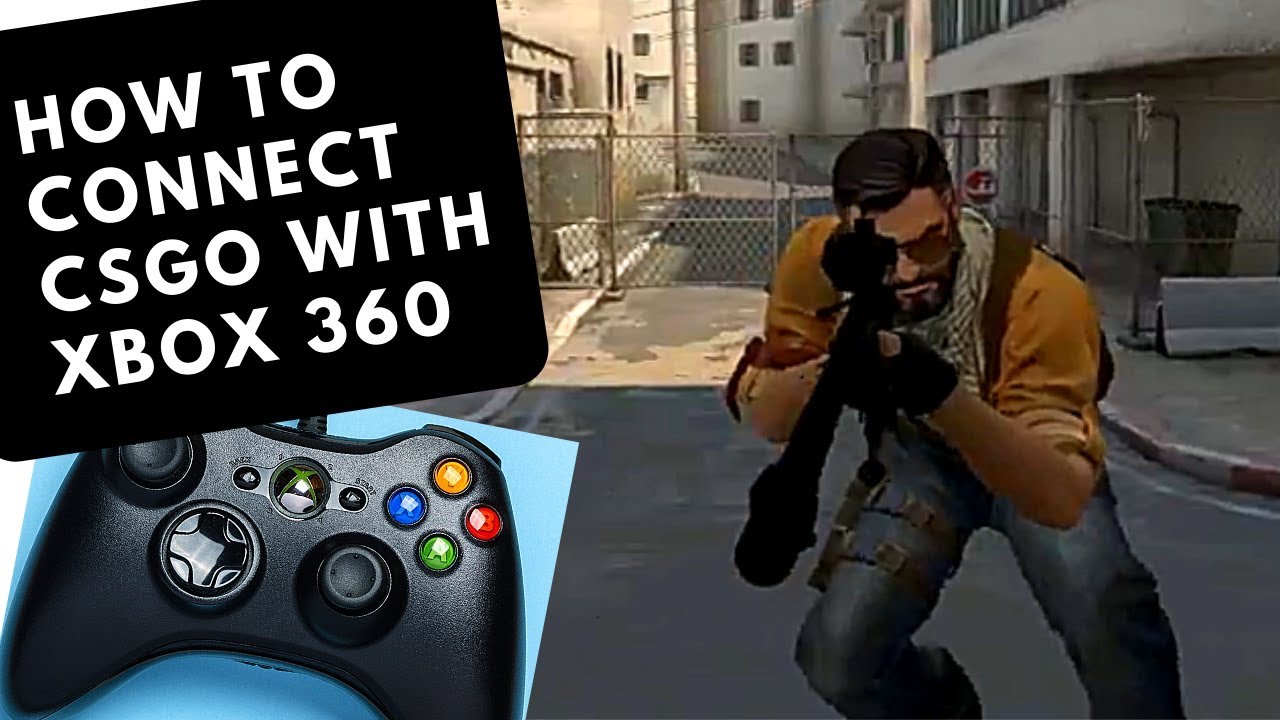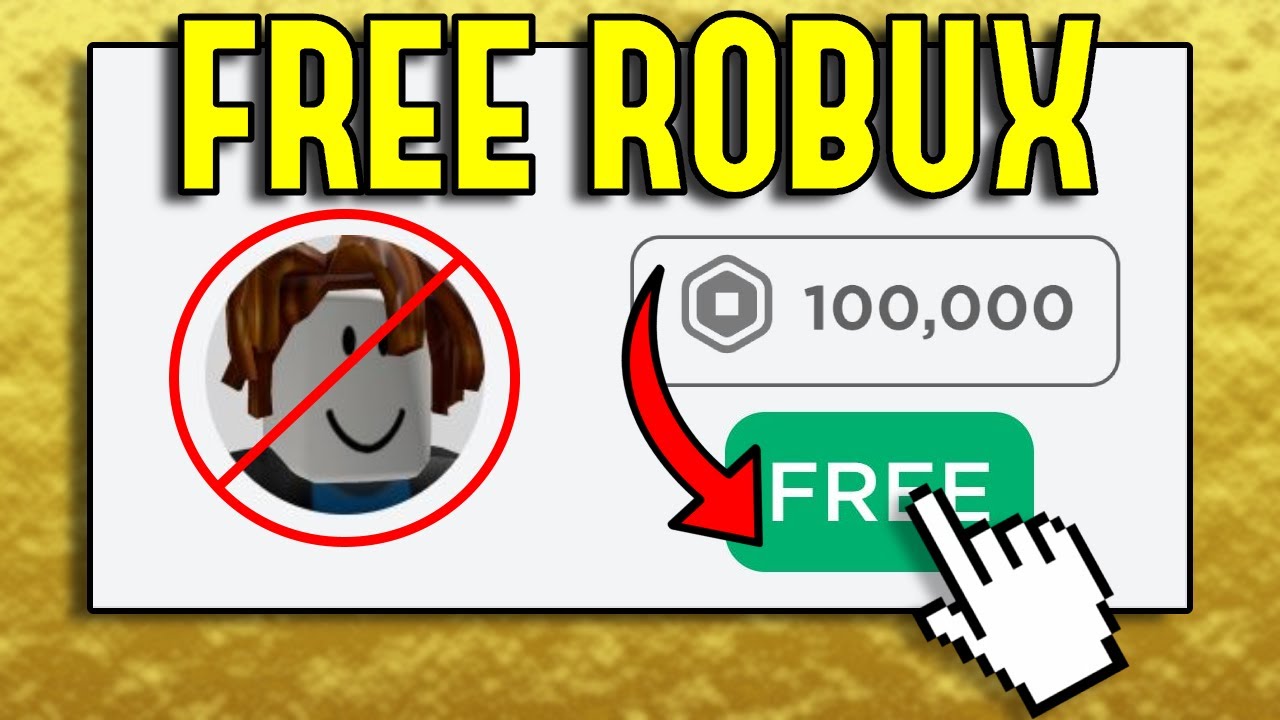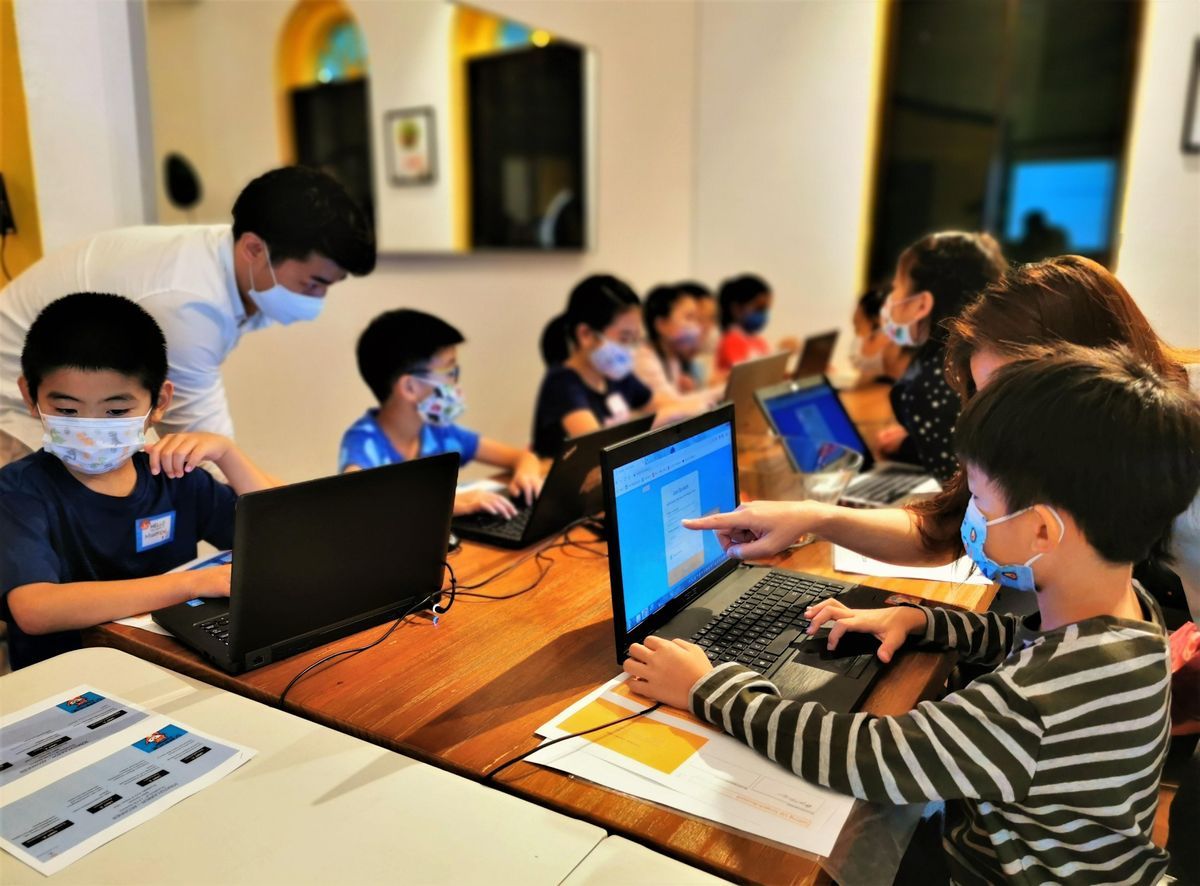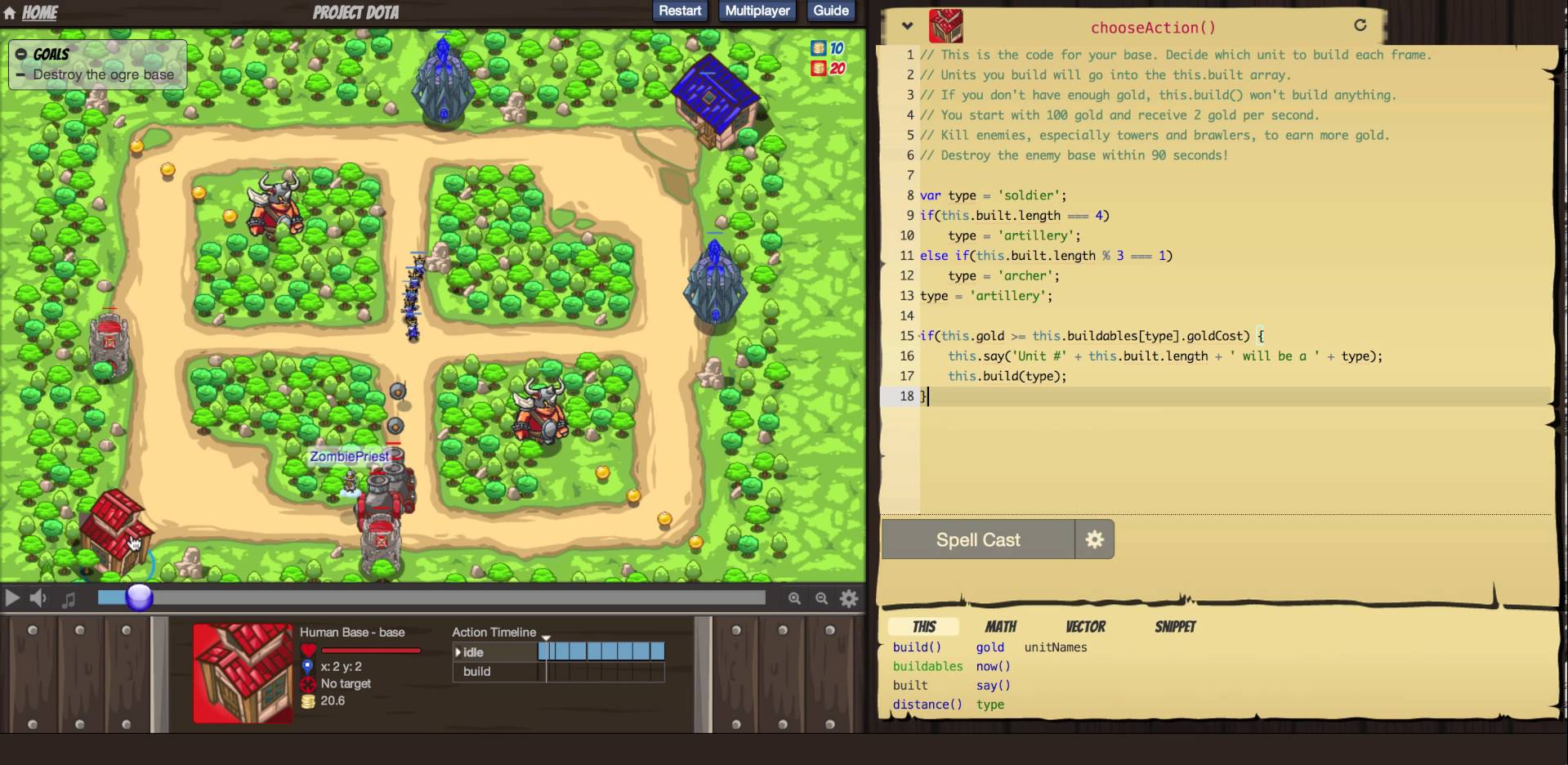Introduction
Welcome to the exciting world of game development! Have you ever dreamed of creating your own games but thought you needed advanced coding skills to do so? Well, think again! In this article, we will explore how to make games without coding. Yes, you read that right – you don’t have to be a programming genius to bring your game ideas to life.
With the evolution of technology, there’s now a wide range of game development tools available that allow beginners and non-programmers to create games with ease. Whether you want to create simple puzzle games or immerse players in elaborate, multi-level adventures, there’s a tool out there to suit your needs.
This article will guide you through the process of making games without coding. We’ll discuss different game development tools, how to choose the right one for your project, and the steps involved in creating your game from start to finish. By the end, you’ll have the knowledge and confidence to embark on your game development journey.
But why should you consider making games without coding? Well, for starters, it opens up a whole new world of creativity and self-expression. Even if you have no prior programming experience, you can still bring your unique game concepts to life and share them with the world.
Additionally, making games without coding provides a great learning opportunity. You’ll gain insight into the fundamentals of game design, develop problem-solving skills, and learn to think critically about player engagement and game mechanics.
Moreover, the accessibility of game development tools has democratized the industry, allowing individuals from diverse backgrounds and skill levels to participate. Whether you’re a student, an artist, a writer, or simply someone with a passion for gaming, you can now turn your ideas into playable experiences.
In the following sections, we’ll explore the various game development tools available and the steps involved in bringing your game to life. So, are you ready to dive into the wonderful world of game development? Let’s get started!
Overview of Game Development Tools
Before we delve into the specific steps of making games without coding, let’s first take a moment to familiarize ourselves with the different game development tools that are available. These tools serve as the foundation for your game creation journey, enabling you to bring your ideas to life without the need for advanced programming skills.
1. GameMaker Studio: GameMaker Studio is a popular game development tool that offers a user-friendly interface and a drag-and-drop system. It allows you to create 2D games for multiple platforms, including Windows, macOS, iOS, Android, and more. With its intuitive visual scripting language, GameMaker Studio is perfect for beginners and hobbyists looking to unleash their creativity.
2. Unity: Unity is arguably one of the most widely used game development engines. It supports both 2D and 3D game development and offers a range of powerful features. Although coding can be done in Unity using C#, it also provides a visual scripting tool called Playmaker, which allows non-programmers to create interactive game behaviors.
3. Construct: Construct is a beginner-friendly game development tool that requires no coding. It offers a visual drag-and-drop interface and a behavior-based event system. With Construct, you can create both 2D and 3D games and export them to various platforms, making it an excellent choice for those new to game development.
4. Twine: Twine is a unique game development tool that focuses on creating interactive storytelling experiences. It uses a simple text-based language to create branching narratives, making it perfect for creating text-based adventures or choose-your-own-adventure type games. Twine games can be easily shared online and played in web browsers.
5. RPG Maker: As the name suggests, RPG Maker is a specialized tool for creating role-playing games. It provides a wide range of pre-built assets, character generators, and event systems, allowing you to create your own epic RPG without writing a single line of code.
These are just a few examples of the game development tools available. Each tool has its own strengths and features, so it’s important to consider your game’s requirements and your personal preferences before choosing the right one for your project.
In the next section, we will discuss how to select the best game development tool for your specific needs, ensuring you have the right tools in your arsenal to bring your game vision to life.
Choosing the Right Game Development Tool
With the abundance of game development tools available, choosing the right one for your project can be a daunting task. However, by considering a few key factors, you can narrow down your options and find the perfect tool to bring your game ideas to life.
1. Game Type: Consider the type of game you want to create. Are you interested in 2D or 3D games? Are you aiming for a specific genre, such as puzzles, platformers, or RPGs? Different tools excel in different game types, so choose one that aligns with your vision.
2. Ease of Use: Evaluate the tool’s user interface and learning curve. If you’re a beginner or non-programmer, look for tools that offer a user-friendly interface and require minimal coding knowledge. Drag-and-drop systems and visual scripting can make the development process more accessible for newcomers.
3. Community and Support: Check the availability of resources, tutorials, and community support. Having an active community can greatly assist you in troubleshooting issues, learning new techniques, and getting inspiration from other developers.
4. Export and Platform Support: Consider the platforms on which you intend to publish your game. Ensure that the chosen tool offers support for exporting to those platforms. Some tools are more suitable for specific platforms, so weigh your options accordingly.
5. Cost: Evaluate the cost of the tool. Some tools offer free versions or trial periods, while others may require a one-time payment or a subscription plan. Make sure the pricing model aligns with your budget and the features you need.
6. Flexibility and Customization: Assess the level of customization and flexibility the tool provides. Some tools offer extensive libraries of assets and pre-built systems, while others allow you to create your own assets and scripts from scratch. Choose a tool that suits your desired level of creative control.
By considering these factors, you can narrow down your options and choose a game development tool that aligns with your specific goals and requirements. Remember, the tool you choose will be the foundation of your game creation journey, so it’s crucial to select one that empowers and inspires you.
Now that you have a clear understanding of how to choose the right game development tool, the next section will guide you through the steps of getting started with game development, regardless of the tool you’ve chosen.
Getting Started with Game Development
Now that you have chosen the perfect game development tool for your project, it’s time to dive into the exciting process of creating your game. Regardless of the tool you’ve selected, the following steps will help you get started on your game development journey.
1. Research and Planning: Start by researching and gathering inspiration for your game. Look for similar games in your chosen genre and analyze their mechanics, art style, and overall gameplay. This will help you understand what works well and what you want to incorporate into your own game. Make a plan or storyboard to outline your game’s structure, levels, and characters.
2. Learn the Basics: Take some time to familiarize yourself with the chosen game development tool. Understand its interface, features, and any available tutorials or documentation. Gain an understanding of how the tool handles assets, scripting, and game logic. This foundation will set you up for success as you move forward.
3. Start Small: Begin with a small, achievable project to gain experience and confidence. Starting small allows you to focus on learning the tool and understanding the game development process without becoming overwhelmed. As you become more comfortable, you can gradually tackle more ambitious projects.
4. Create Game Assets: If your chosen tool doesn’t provide a library of pre-built assets, it’s time to create your own. Design and create artwork for your characters, objects, and backgrounds. Compose or find suitable music and sound effects to enhance the player experience. Pay attention to aesthetics and aim for a cohesive and visually appealing game world.
5. Implement Game Mechanics: Begin by creating the core mechanics of your game. This may include movement controls, collision detection, scoring systems, or puzzle-solving elements. Refer to the tool’s documentation or tutorials to learn how to implement these mechanics using the built-in features or scripting options.
6. Iterate and Test: Test your game frequently as you build it, and gather feedback from others. This will help you identify and resolve any bugs, glitches, or areas in need of improvement. Don’t be afraid to iterate and tweak your game mechanics, level design, and overall gameplay to enhance the player experience.
7. Polish and Finish: Once you have the core features of your game in place, take the time to polish and refine it. Add visual effects, animations, and transitions to make your game feel polished and professional. Fine-tune the difficulty curve, level design, and overall balance to ensure an engaging and enjoyable experience.
8. Playtest and Get Feedback: Enlist the help of others to playtest your game. Their feedback can be invaluable in uncovering any issues you may have missed, as well as providing insights into the overall player experience. Use this feedback to further refine and improve your game.
Remember, game development is an iterative process, and it’s okay to make mistakes and learn along the way. With each project you create, you’ll gain valuable experience that will fuel your growth as a game developer.
In the next sections, we will delve into the various aspects of game development, from designing game characters and objects to adding interactions and publishing your game for others to enjoy.
Designing the Game
Designing the game is a crucial step in the game development process as it lays the foundation for the player experience. Whether you’re creating a puzzle game, an action-packed adventure, or a strategy game, the overall design is instrumental in capturing the player’s attention and keeping them engaged. Here are some key considerations when designing your game:
1. Game Concept: Define the core concept and theme of your game. What will make it unique and appealing to players? Consider the story, setting, and overall tone of the game. Brainstorm ideas and create a vision for how you want your game to look and feel.
2. Gameplay Mechanics: Determine the gameplay mechanics that will drive the player’s actions and interactions in the game. Will it be physics-based, turn-based, or real-time? Will there be puzzles, combat, or strategy elements? Map out how these mechanics will unfold throughout the game.
3. Level Design: Plan the structure and layout of your game’s levels. Consider the difficulty curve, pacing, and progression in terms of challenges and rewards. Ensure a balance between providing a sense of accomplishment and keeping the player motivated to continue playing.
4. User Interface (UI): Create an intuitive and visually appealing user interface (UI) that allows players to navigate through your game seamlessly. Consider the placement of buttons, menus, and icons to ensure ease of use and accessibility for all players.
5. Art Style and Graphics: Decide on an art style that complements your game concept and resonates with your target audience. Determine the color palette, visual aesthetics, and overall graphics quality. Consistency in art style will create a cohesive and immersive experience.
6. Sound and Music: Sound effects and music play a vital role in enhancing the player’s experience. Choose audio elements that complement the gameplay and set the mood. Consider using music to create atmosphere and sound effects to provide feedback and cues to the player.
7. Storytelling: If your game incorporates a storyline, develop intriguing and engaging narrative elements. Create memorable characters, compelling dialogue, and intriguing plot twists to captivate the player and keep them invested in the game’s outcome.
8. Feedback and Iteration: Regularly playtest your game to gather feedback from others. Listen to their suggestions, identify potential areas for improvement, and iterate on your game design accordingly. Continuously refining and polishing the game will result in a more enjoyable and immersive experience.
Remember, the key to successful game design is to remain focused on creating an experience that is enjoyable, engaging, and suited to your target audience. Stay open to feedback, be willing to make changes, and let your creativity shine through in every aspect of your game design.
In the next section, we will explore the process of creating game characters and objects, an essential aspect of bringing your game world to life.
Creating Game Characters and Objects
Game characters and objects are the building blocks of your game world, bringing life and interactivity to your gameplay. Whether you’re creating lovable heroes, fearsome enemies, or intricate environmental elements, designing compelling and visually appealing characters and objects is crucial. Here are some key steps to consider when creating game characters and objects:
1. Character Concept: Start by brainstorming and defining the concept for your game characters. Consider their personality, backstory, and role within the game. What are their unique abilities or traits that make them stand out? Sketch out rough designs to visualize their appearance and characteristics.
2. Character Design: Once you have a clear concept, proceed to create detailed character designs. Pay attention to their visual attributes such as proportions, facial features, clothing, and accessories. Aim for designs that are memorable, visually appealing, and resonate with players.
3. Animation and Movement: Animate your characters to make them come alive. Consider their movements, gestures, and expressions. Develop key animations for actions such as walking, jumping, attacking, and any unique abilities or interactions they possess. Smooth and fluid animations will enhance player immersion.
4. Object Functionality: Determine the purpose and functionality of in-game objects. Whether it’s collectibles, power-ups, obstacles, or interactive elements, define how they will contribute to the player experience. Create visually distinctive designs that clearly convey their purpose and make them easily identifiable.
5. Environmental Elements: Design the various elements that make up your game environment. Focus on creating a visually appealing and cohesive world. Consider the color palettes, textures, and architectural elements that will help establish the game’s atmosphere and immerse players in the experience.
6. Prototyping and Testing: Create prototypes of your characters and objects to test their functionality and visual appeal within the game. Playtest with different players and gather feedback on how these elements contribute to the overall gameplay and aesthetics. Iterate on designs to address any issues or areas for improvement.
7. Audio Integration: Don’t forget to consider the audio aspects of your characters and objects. Design or select appropriate sound effects and voices to enhance their presence and interactions. Sound effects can add depth and give players feedback, while character voices can provide personality and express emotions.
Remember, the characters and objects you create should align with your game’s design and mechanics. Ensure that they contribute to the player’s experience, adding depth, excitement, and immersion to the gameplay.
In the next section, we will explore the process of adding game interactions and mechanics, which will bring your characters and objects to life in a dynamic and engaging way.
Adding Game Interactions and Mechanics
Game interactions and mechanics are the backbone of your gameplay experience. These elements determine how players interact with your game world and the challenges and rewards they encounter along the way. When adding game interactions and mechanics, consider the following steps to create engaging and dynamic gameplay:
1. Player Controls: Design intuitive and responsive player controls. Take into account the platform you’re developing for and ensure that the controls feel comfortable and natural. Whether it’s keyboard and mouse, touchscreen gestures, or controller inputs, aim for a seamless and enjoyable playing experience.
2. Game Rules and Objectives: Establish clear game rules and objectives. Communicate to players what they need to achieve and any constraints or limitations they need to consider. Clearly define win conditions and any criteria for progression or advancement within the game.
3. Challenge and Progression: Determine the difficulty curve and progression system for your game. Start with easier challenges to introduce players to the mechanics and gradually increase the difficulty as the game progresses. Provide meaningful rewards and incentives to keep players motivated.
4. Power-ups and Abilities: Incorporate power-ups, special abilities, or upgrades that players can acquire during gameplay. These elements can enhance gameplay, provide new strategies, or unlock new areas. Ensure that they align with the game’s mechanics and add depth to the player’s experience.
5. Interactable Objects: Create objects within the game world that players can interact with. These objects can include buttons, switches, levers, and puzzles. Design interactions that are intuitive and satisfying, providing a sense of accomplishment when solved or activated.
6. Artificial Intelligence (AI): If your game involves non-player characters (NPCs), implement AI systems to create realistic and challenging opponents or allies. Define their behaviors, decision-making processes, and responses to player actions to provide engaging and dynamic interactions.
7. Feedback and Response: Provide clear and immediate feedback to players. This can include visual cues, sound effects, or haptic feedback to inform players of successful actions, progress, or when they encounter obstacles. Effective feedback enhances player understanding and engagement.
8. Balancing and Testing: Continuously balance and test your game interactions and mechanics. Iterate on their implementation based on player feedback to ensure fairness, challenge, and enjoyment. Strive for a well-balanced gameplay experience that keeps players engaged and motivated.
Remember, game interactions and mechanics play a crucial role in creating a compelling and enjoyable gameplay experience. Take the time to refine and polish these elements, ensuring they align with your game’s vision and provide a rewarding experience for players.
In the next section, we will explore the process of implementing game levels and challenges, taking your players on an exciting journey through your game world.
Implementing Game Levels and Challenges
Implementing game levels and challenges is an important aspect of game development that shapes the overall progression and excitement of your game. Well-designed levels and thought-provoking challenges keep players engaged and motivated to continue playing. Here are some key steps to consider when implementing game levels and challenges:
1. Level Design: Plan the layout and structure of your game levels. Consider the difficulty curve and ensure a balanced progression that gradually introduces new mechanics and challenges as players advance. Pay attention to pacing, variety, and the overall flow of the game experience.
2. Theme and Atmosphere: Establish a consistent theme or atmosphere for each level. This can include visual design, music, and sound effects to create an immersive and coherent experience. Make sure the theme complements the gameplay and storyline, enhancing player engagement.
3. Object Placement: Strategically place objects, enemies, and obstacles within each level. Create interesting and dynamic arrangements to engage players and promote exploration. Balance the placement to provide a fair challenge while avoiding frustration.
4. Puzzles and Challenges: Incorporate puzzles, riddles, and challenges that require strategic thinking and problem-solving. Gradually increase their complexity to provide a sense of progression and reward players for their mental agility. Ensure that puzzles and challenges are intuitive and solvable within the game’s mechanics.
5. Hidden Secrets and Collectibles: Sprinkle hidden secrets and collectibles throughout your levels to reward exploration. These can include hidden areas, bonus items, or unlockable content. Encouraging players to fully explore your game world adds depth and replay value.
6. Checkpoints and Saving: Add checkpoints or saving mechanisms to allow players to progress through levels without fear of losing all their progress. Balancing the frequency of checkpoints ensures that players are challenged but not frustrated by having to redo large portions of a level.
7. Difficulty Adjustment: Consider implementing difficulty levels or adjustable parameters to cater to a wide range of player skills. Allow players to choose between easy, medium, or hard difficulties to provide a customizable experience that suits their preferences.
8. Testing and Iteration: Playtest your levels and challenges extensively. Gather feedback from players to identify areas that may need adjustment or improvement. Iteratively refine the level designs based on player feedback, ensuring a rewarding and enjoyable experience.
By carefully implementing game levels and challenges, you can provide an immersive and engaging experience for your players. A well-crafted progression and thoughtful challenges will keep players hooked, eager to discover what lies ahead.
In the next section, we will explore the process of creating visually stunning game visuals and audio that will enhance the overall atmosphere and immersion of your game.
Creating Game Visuals and Audio
Creating visually stunning game visuals and audio is essential for capturing the attention and immersing players in your game world. Well-designed visuals and carefully crafted audio can enhance the atmosphere, emotions, and overall player experience. Here are key steps to consider when creating game visuals and audio:
1. Artistic Style: Determine the artistic style that best suits your game. Consider whether you want a realistic, cartoonish, pixelated, or abstract aesthetic. Choose a style that complements your game’s theme and target audience.
2. Concept Art: Create concept art to visualize your game’s characters, environments, and objects. These initial sketches and illustrations help establish the look and feel of your game. Refine and iterate on the concept art before moving on to the production stage.
3. Graphics Assets: Create or acquire high-quality graphics assets for your game. This includes character sprites, environmental elements, user interface components, and special effects. Ensure that the designs are cohesive and visually appealing, aligning with the overall art style.
4. Animation: Animate your game visuals to bring them to life. Create smooth and fluid animations for character movements, object interactions, and visual effects. Animation adds a layer of polish and enhances the player’s immersion in the game world.
5. Sound Design: Craft sound effects that enhance the player’s interaction with the game. From footsteps and explosions to button clicks and item pickups, the soundscape should provide feedback and create a sense of atmosphere. Consider using Foley techniques or digital sound libraries to create unique and immersive sounds.
6. Background Music: Compose or select suitable background music that complements the game’s theme, setting, and mood. The music should enhance the player’s emotional response, whether it’s creating tension, excitement, or a sense of tranquility. Ensure that the music loops seamlessly and matches the pace of the gameplay.
7. Voice Acting (if applicable): If your game includes dialogue or narrative elements, consider incorporating voice acting. Hire voice actors or record your lines to bring your characters to life. The voice acting should be clear, expressive, and match the personalities of the characters.
8. Playtest and Polish: Continuously playtest your game to ensure that the visuals and audio elements work together harmoniously. Gather feedback from players to identify any issues or areas for improvement. Polish and refine the visuals and audio based on the feedback received.
Remember, the combination of well-crafted visuals and audio can enhance the player’s immersion and emotional connection to your game. Strive to create a cohesive and captivating audiovisual experience that leaves a lasting impression on players.
In the next section, we will discuss the crucial process of testing and debugging your game to ensure a smooth and enjoyable gaming experience for players.
Testing and Debugging the Game
Testing and debugging is a crucial phase in game development that ensures your game functions as intended and provides a smooth and enjoyable experience for players. It involves identifying and fixing any issues, bugs, or glitches that may arise during gameplay. Here are some key steps to consider when testing and debugging your game:
1. Alpha Testing: Conduct alpha testing with a small group of trusted individuals who can provide valuable feedback. Have them play through the game and provide honest insights on its mechanics, level design, controls, and overall enjoyment. Note any issues or suggestions for improvement.
2. Bug Tracking: Establish a reliable bug tracking system to record and manage identified issues. This can be a spreadsheet, a dedicated software, or a project management tool. Make sure to include details such as the bug description, steps to reproduce, and priority level for each issue.
3. Beta Testing: Expand your testing pool by conducting beta testing with a larger group of players. This could be done through public beta testing or by inviting a select group of individuals. Encourage testers to provide feedback, report any bugs they encounter, and share their overall experience playing the game.
4. Testing Different Platforms: If your game is designed to run on multiple platforms, ensure you test it thoroughly on each target platform. This includes testing on various operating systems, devices, screen resolutions, and input methods. Check for compatibility issues and adjust accordingly.
5. Gameplay Balance: Continuously evaluate the gameplay balance, difficulty, and progression through playtesting. Adjust and fine-tune various aspects of the game, such as enemy behaviors, reward systems, and level design, to ensure a well-paced and challenging experience for players.
6. User Experience (UX) Testing: Pay close attention to the overall user experience (UX) during testing. Consider player feedback regarding usability, responsiveness, and the intuitiveness of controls and interfaces. Make necessary adjustments to enhance the overall flow and accessibility of the game.
7. Performance Testing: Perform performance testing to ensure the game runs smoothly and without lag. Test the game on different devices and monitor factors such as loading times, frame rates, memory usage, and overall stability. Optimize the game’s performance by addressing any performance bottlenecks.
8. Regression Testing: Once you have fixed bugs and made improvements, conduct regression testing to ensure that fixes haven’t introduced new issues. Re-test previously fixed areas of the game to verify their stability and functionality.
Throughout the testing process, keep an open line of communication with your testers and encourage them to provide detailed feedback. Actively address reported issues and prioritize their resolution based on their impact on the overall game experience.
By thoroughly testing and debugging your game, you can identify and resolve any issues before releasing it to the public. This ensures that players have a smooth, immersive, and enjoyable experience when they play your game.
In the next section, we will explore the final steps of publishing and sharing your game with the world.
Publishing and Sharing the Game
After putting in all the hard work and dedication to develop your game, it’s time to share it with the world. Publishing and sharing your game is a critical step that allows players to discover and enjoy your creation. Here are some key steps to consider when publishing and sharing your game:
1. Choose a Platform: Decide on the platform on which you want to release your game. Options include PC, console, mobile devices, or web-based platforms. Each platform has its own requirements and distribution methods, so choose the one that aligns with your target audience and game design.
2. Create a Release Build: Prepare a release build of your game that meets the specifications and guidelines of your chosen platform. This version should be fully tested and free of any major bugs or issues that hinder the player experience.
3. App Store Submission: If you’re releasing your game on mobile platforms, such as iOS or Android, follow the guidelines provided by the respective app stores. This may involve creating developer accounts, providing necessary information, and adhering to specific content and technical requirements.
4. Marketplace Submission: For PC or console platforms, submit your game to relevant marketplaces, such as Steam, PlayStation Store, Xbox Live, or Nintendo eShop. Familiarize yourself with the submission process and requirements, including technical documentation, age ratings, and marketing assets.
5. Marketing and Promotion: Create a marketing strategy to generate awareness and interest in your game. Develop a compelling trailer, screenshots, and promotional materials that showcase your game’s unique features and gameplay. Utilize social media, gaming communities, and game review sites to reach your target audience.
6. Community Engagement: Interact with your player community by responding to feedback, addressing issues, and providing updates and additional content. Engaging with your players helps build a loyal fan base and encourages word-of-mouth recommendations.
7. Localization: Consider localizing your game to reach a wider audience. Translate in-game text, subtitles, and any other necessary content to appeal to players who speak different languages. This can significantly increase your game’s accessibility and potential market reach.
8. Updates and Support: Continue to support your game even after release by providing regular updates and bug fixes. This demonstrates your commitment to your players and helps maintain a positive reputation for your game.
Remember, publishing and sharing your game is an exciting milestone, but it’s also important to plan for ongoing support and updates. Stay connected with your players, take their feedback into consideration, and continue to refine and improve your game based on their input.
With a thoughtful approach to publishing and sharing, you’ll be able to reach a wider audience and provide countless players with the opportunity to experience and enjoy your game.
In the final section, we will wrap up our discussion and summarize the key aspects of making games without coding.
Conclusion
Congratulations on reaching the end of this guide on making games without coding! We’ve covered a wide range of aspects, from choosing the right game development tool to publishing and sharing your game with the world. By embracing game development tools that require little to no coding knowledge, you’ve unlocked a world of creativity and self-expression.
Throughout this journey, we explored the importance of research and planning, the design considerations for game visuals and audio, and the critical process of testing and debugging. Each step is crucial in ensuring a polished and enjoyable gaming experience for players.
We discussed the significance of designing compelling game characters and objects, adding engaging interactions and mechanics, and implementing exciting game levels and challenges. These elements combined to create a captivating and immersive gameplay experience.
We also touched on the essential steps of publishing and sharing your game, including choosing the right platform, marketing and promotion strategies, and ongoing support for your players. These steps are crucial for reaching a wider audience and building a community around your game.
Remember, game development is a continuous learning process. As you become more familiar with game development tools and gain experience, you’ll continue to grow as a game developer. Embrace feedback, iterate on your designs, and never be afraid to try new ideas.
Whether you’re an aspiring game developer, a hobbyist looking to explore your creative side, or someone passionate about gaming, making games without coding opens up endless possibilities. You can turn your ideas into reality and share them with others, creating immersive and enjoyable gaming experiences.
So, let your imagination run wild, embrace your passion for gaming, and start creating your own games without coding. The possibilities are limitless, and the joy of seeing your vision come to life is truly rewarding. Happy game development!














![How To Get Free VIP On MSP 2018 [No Download Or Survey]](https://robots.net/wp-content/uploads/2023/11/how-to-get-free-vip-on-msp-2018-no-download-or-survey-1701015882.jpg)










